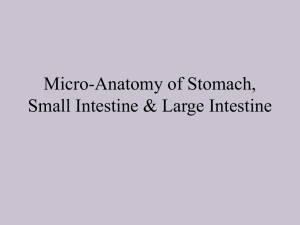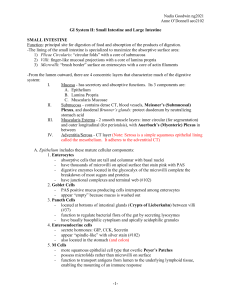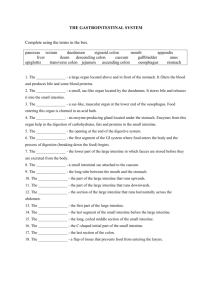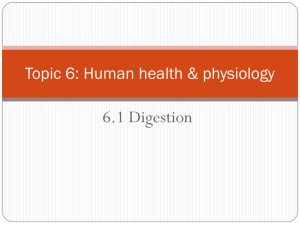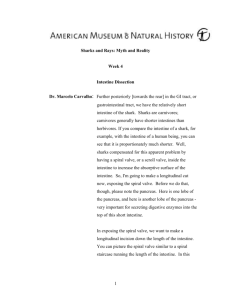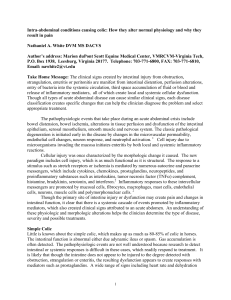Digestive II Part B: Intestines
advertisement
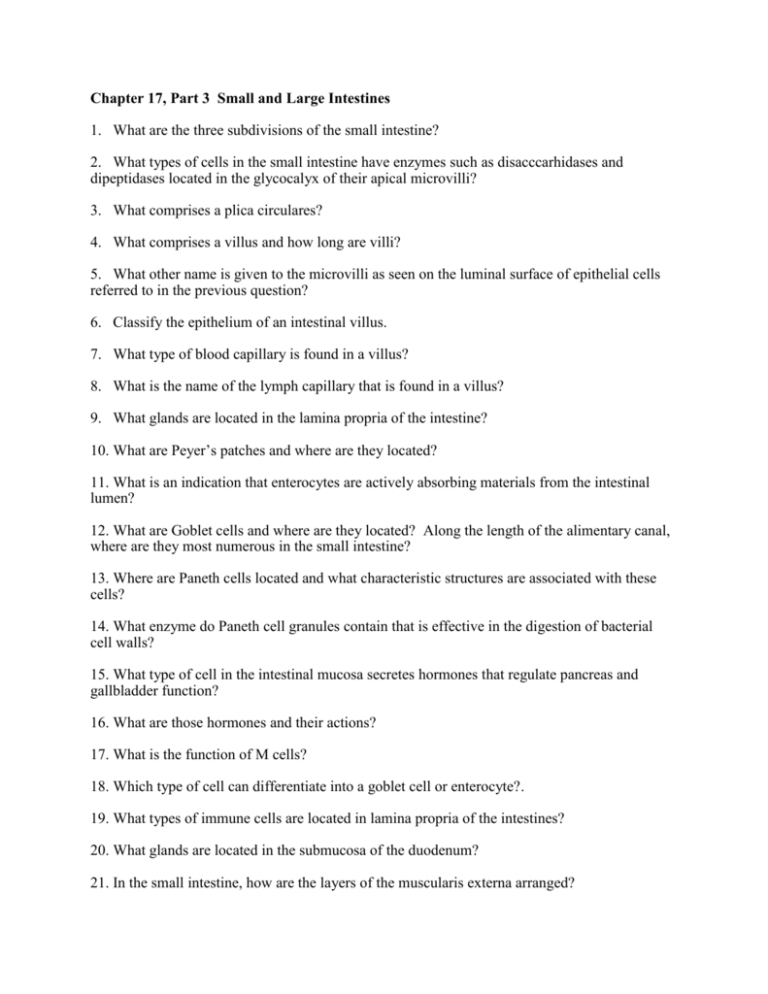
Chapter 17, Part 3 Small and Large Intestines 1. What are the three subdivisions of the small intestine? 2. What types of cells in the small intestine have enzymes such as disacccarhidases and dipeptidases located in the glycocalyx of their apical microvilli? 3. What comprises a plica circulares? 4. What comprises a villus and how long are villi? 5. What other name is given to the microvilli as seen on the luminal surface of epithelial cells referred to in the previous question? 6. Classify the epithelium of an intestinal villus. 7. What type of blood capillary is found in a villus? 8. What is the name of the lymph capillary that is found in a villus? 9. What glands are located in the lamina propria of the intestine? 10. What are Peyer’s patches and where are they located? 11. What is an indication that enterocytes are actively absorbing materials from the intestinal lumen? 12. What are Goblet cells and where are they located? Along the length of the alimentary canal, where are they most numerous in the small intestine? 13. Where are Paneth cells located and what characteristic structures are associated with these cells? 14. What enzyme do Paneth cell granules contain that is effective in the digestion of bacterial cell walls? 15. What type of cell in the intestinal mucosa secretes hormones that regulate pancreas and gallbladder function? 16. What are those hormones and their actions? 17. What is the function of M cells? 18. Which type of cell can differentiate into a goblet cell or enterocyte?. 19. What types of immune cells are located in lamina propria of the intestines? 20. What glands are located in the submucosa of the duodenum? 21. In the small intestine, how are the layers of the muscularis externa arranged? 22. What two types of motility exist in the small intestine? 23. Where are the stem cells located that provide for replacement of intestinal epithelium? 24. How long do enterocytes and Goblet cells remain functional? 25. What is the main function of the large intestine? 26. How does the mucosa of the large intestine differ from that of the small intestine? 27. What cell type (other than smooth muscle) facilitates the smooth movement of semisolid wastes along the colon? 28. Are Paneth cells usually found in the large intestine? 29. What is the like explanation for huge lymphatic nodules that extend into the submucosa of the large intestine? 30. In the cecum and colon, how does the muscularis externa of the large intestine differ from that of the small intestine? 31. Explain why adenomas (polyps) that develop in the colon may grow to large size before metastasizing? 32. In which portion of the gut might one find small amounts of stratified columnar epithelium?
